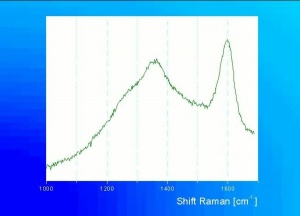Difference between revisions of "Vine black"
Jump to navigation
Jump to search
m (Text replace - "== Authority ==" to "== Sources Checked for Data in Record ==") |
|||
| (2 intermediate revisions by 2 users not shown) | |||
| Line 1: | Line 1: | ||
== Description == | == Description == | ||
| − | An unstandardized term used in the 19th century for [ | + | An unstandardized term used in the 19th century for [[carbon%20black|carbon black]] pigments obtained from pyrolyzed vegetable sources. Vine black, once synonymous with yeast black, has also been made from grapevines. Vine black did not have the intensity or tinting strength of [[lampblack|lampblack]] or [[ivory%20black|ivory black]], but it had excellent lightfastness. |
== Synonyms and Related Terms == | == Synonyms and Related Terms == | ||
| − | charcoal black; Pigment Black 8; noir de vigne (Fr.); Rebenschwarz (Deut.); wijnrankenzwart (Ned.); nero vite (It.); negro de videira (Port.); yeast black; grape black; kernel black; drop black; cork black; mare black; Spanish black; German black; Frankfort black; blue black | + | charcoal black; Pigment Black 8; noir de vigne (Fr.); Rebenschwarz (Deut.); wijnrankenzwart (Ned.); nero vite (It.); negro de videira (Port.); yeast black; grape black; kernel black; drop black; cork black; mare black; marc black; Spanish black; German black; Frankfort black; blue black |
[[[SliderGallery rightalign|vineblack531.jpg~Raman]]] | [[[SliderGallery rightalign|vineblack531.jpg~Raman]]] | ||
| − | == | + | == Physical and Chemical Properties == |
ASTM (1999) lightfastness = I (excellent) | ASTM (1999) lightfastness = I (excellent) | ||
| − | == | + | == Resources and Citations == |
| − | J.Winter, "The Characterization of Pigments Based on Carbon" ''Studies in Conservation'', 28:49-66, 1983. | + | * J.Winter, "The Characterization of Pigments Based on Carbon" ''Studies in Conservation'', 28:49-66, 1983. |
| − | |||
| − | |||
* R. J. Gettens, G.L. Stout, ''Painting Materials, A Short Encyclopaedia'', Dover Publications, New York, 1966 | * R. J. Gettens, G.L. Stout, ''Painting Materials, A Short Encyclopaedia'', Dover Publications, New York, 1966 | ||
| Line 23: | Line 21: | ||
* Ralph Mayer, ''A Dictionary of Art Terms and Techniques'', Harper and Row Publishers, New York, 1969 (also 1945 printing) | * Ralph Mayer, ''A Dictionary of Art Terms and Techniques'', Harper and Row Publishers, New York, 1969 (also 1945 printing) | ||
| − | * Website | + | * Website: www.handprint.com |
* Art and Architecture Thesaurus Online, http://www.getty.edu/research/tools/vocabulary/aat/, J. Paul Getty Trust, Los Angeles, 2000 | * Art and Architecture Thesaurus Online, http://www.getty.edu/research/tools/vocabulary/aat/, J. Paul Getty Trust, Los Angeles, 2000 | ||
Latest revision as of 11:26, 17 October 2022
Description
An unstandardized term used in the 19th century for Carbon black pigments obtained from pyrolyzed vegetable sources. Vine black, once synonymous with yeast black, has also been made from grapevines. Vine black did not have the intensity or tinting strength of Lampblack or Ivory black, but it had excellent lightfastness.
Synonyms and Related Terms
charcoal black; Pigment Black 8; noir de vigne (Fr.); Rebenschwarz (Deut.); wijnrankenzwart (Ned.); nero vite (It.); negro de videira (Port.); yeast black; grape black; kernel black; drop black; cork black; mare black; marc black; Spanish black; German black; Frankfort black; blue black
Physical and Chemical Properties
ASTM (1999) lightfastness = I (excellent)
Resources and Citations
- J.Winter, "The Characterization of Pigments Based on Carbon" Studies in Conservation, 28:49-66, 1983.
- R. J. Gettens, G.L. Stout, Painting Materials, A Short Encyclopaedia, Dover Publications, New York, 1966
- Ralph Mayer, A Dictionary of Art Terms and Techniques, Harper and Row Publishers, New York, 1969 (also 1945 printing)
- Website: www.handprint.com
- Art and Architecture Thesaurus Online, http://www.getty.edu/research/tools/vocabulary/aat/, J. Paul Getty Trust, Los Angeles, 2000
